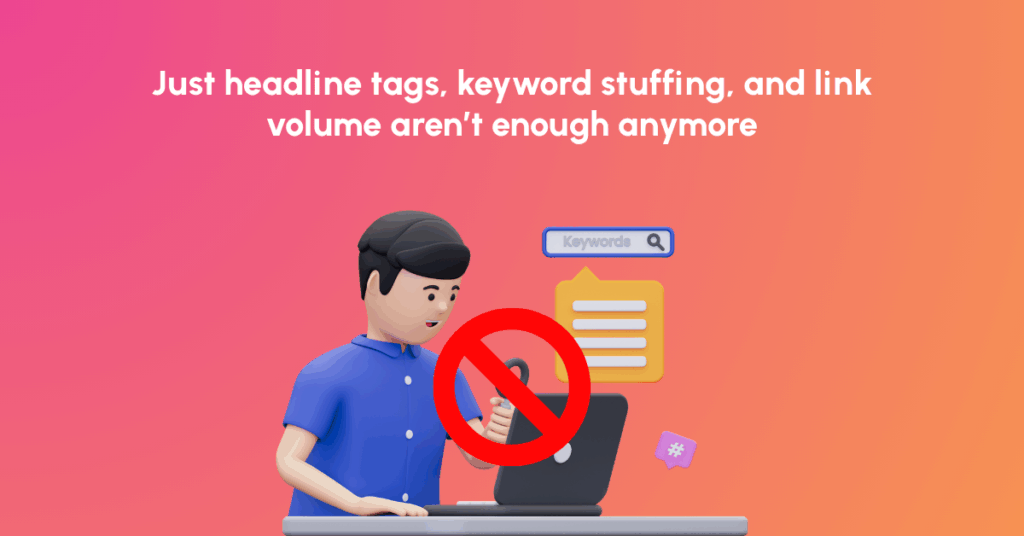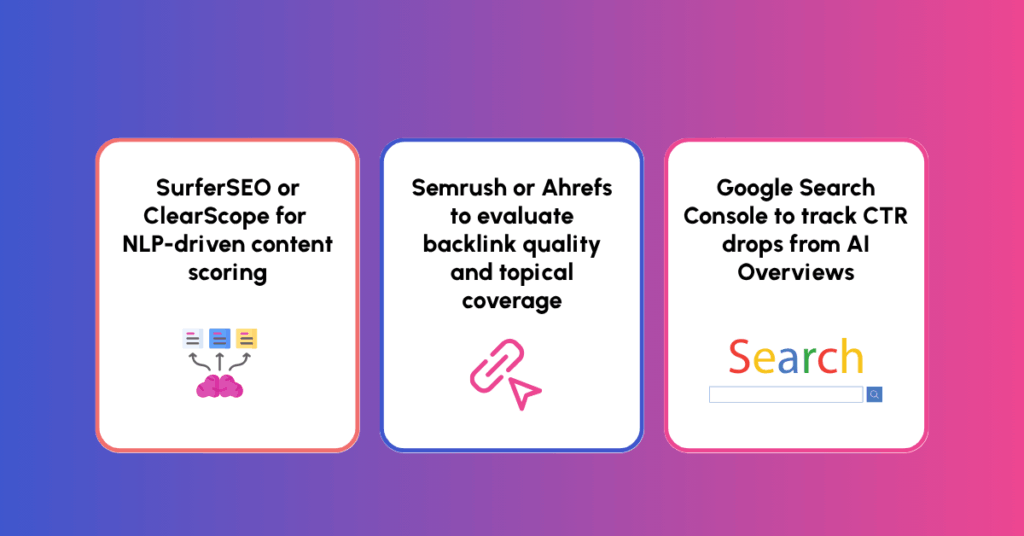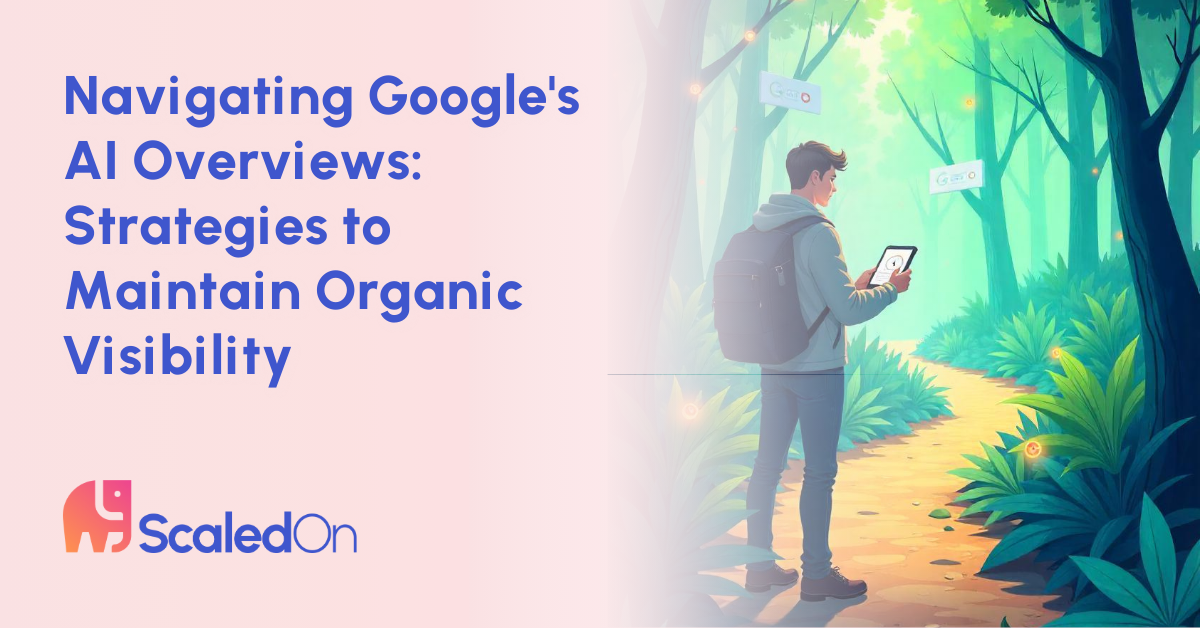Search as we know it is changing—fast.
If you’ve noticed a sudden drop in your click-through rates (CTR), you’re not alone. Google’s AI Overviews, which now appear at the top of many search results, are transforming how users interact with content—and who gets the clicks.
A recent analysis found that CTR for top-ranking organic listings has dropped by an average of 34.5% in queries showing AI Overviews. That’s a seismic shift for brands relying on organic traffic.
In this post, we’ll break down what AI Overviews are, how they impact visibility, and most importantly—how to adapt your SEO strategy to thrive in this new landscape.
Table of Contents
1. What Are Google’s AI Overviews?
AI Overviews are generative summaries that appear at the top of Google search results. They’re built using Google’s Generative Search Experience (SGE) and are designed to provide users with a synthesized answer to their query—often eliminating the need to click at all.
Each Overview pulls content from multiple sources, often citing websites directly in the response via a “Source” card or link.
But here’s the catch: Being included in an Overview doesn’t guarantee a click, and not being included often means you’re buried further down the page.
2. How AI Overviews Impact Organic Performance
Let’s look at the numbers:
- CTR for the top 3 organic results has dropped by up to 45% on pages where AI Overviews appear.
- In some verticals (like health, finance, and DIY), AI Overviews dominate the fold, pushing organic results down or replacing featured snippets entirely.
- Sites that previously relied on high-ranking blog posts or FAQ pages are seeing less traffic with no drop in rank, signaling a classic zero-click environment.
This shift has created a new battleground: if you’re not in the AI Overview, you’re effectively invisible.
3. The Rise of Zero-Click Search 2.0
We’ve seen zero-click trends before—featured snippets, knowledge panels, and People Also Ask boxes.
But AI Overviews take it further:
- They aggregate content from multiple domains
- They often provide a complete answer
- They reduce visible SERP space for organic links
In short, this is zero-click search on steroids, and your strategy needs to evolve.
4. Why Traditional SEO Tactics Aren’t Enough
The classic approach of targeting high-volume keywords and optimizing metadata isn’t sufficient anymore.
Google’s AI is looking beyond:
- Just your headline tags
- Keyword matching
- Link counts
It’s now evaluating semantic relevance, topical authority, trustworthiness, and originality at a much deeper level.
That means it’s not just about ranking. It’s about being the “best supporting content” for a machine-generated answer.
5. How to Optimize for Inclusion in AI Overviews
✅ 1. Be Citable, Not Just Rankable
AI Overviews include sources they trust—typically domains with strong E-E-A-T (Experience, Expertise, Authoritativeness, Trustworthiness). You need to signal credibility in the content itself, not just through backlinks.
Ways to build this:
- Add expert author bios
- Use first-person insights and original quotes
- Reference trusted external sources
- Include clear citations and statistics
Want help assessing your brand’s E-E-A-T signals? Explore ScaledOn’s content audit service.
✅ 2. Use Structured Data to Talk to AI
While AI Overviews are generative, structured data (schema) still helps Google understand your content.
Add or update the following schema types:
- FAQ
- HowTo
- Article
- Product
- Organization and Person (for author identity)
Structured data makes your content machine-readable and increases the chance of being used as a source.
✅ 3. Answer Questions Within the Content
AI Overviews favor clear, concise answers to questions. Create answer boxes directly within your content using:
- Short, scannable paragraphs (1–3 sentences)
- Bullet points
- Subheadings that match query intent (e.g., “What is X?” or “How to Y”)
Pro tip: Look at People Also Ask queries to see what phrasing users (and Google) expect.
✅ 4. Double Down on Originality

Generic content doesn’t get cited. AI wants:
- Unique insights
- Real data
- Contrarian takes or deep dives
If you’re saying what everyone else is, you’ll never stand out in a synthesized result.
6. Maintaining Visibility Beyond the Summary
Not every business will be cited directly in the AI Overview. That’s okay—but you still need to capture attention elsewhere on the page.
Use These Strategies:
- Optimize People Also Ask answers
- Build FAQ-rich landing pages
- Win topical authority with clusters of content
- Target long-tail and “next question” searches
- Use branded search terms to ensure you remain clickable when users seek clarity
Related: Learn how we build topic clusters to support authority and SERP visibility.
7. SEO Strategies That Still Work (and Some That Don’t)
Still Effective:
✅ Topical authority via clusters
✅ Fast-loading, mobile-optimized UX
✅ Original research and opinionated content
✅ Internal linking to signal content relationships
✅ Schema and structured data
✅ FAQs and “how to” formats
Losing Effectiveness:
❌ Thin affiliate content
❌ AI-generated content with no editorial layer
❌ Over-optimized keyword stuffing
❌ Chasing only high-volume head terms
❌ Ignoring brand-building in favor of keyword focus
8. Tools and Signals AI Overviews Are Likely Using

While Google hasn’t published its exact criteria, based on analysis and testing, AI Overviews seem to favor content that:
- Has high engagement and dwell time
- Comes from domains with strong topical consistency
- Includes semantic relevance, not just exact matches
- Shows authority through link quality, not quantity
- Demonstrates freshness and is regularly updated
Use tools like:
- SurferSEO or ClearScope for NLP-driven content scoring
- Semrush or Ahrefs to evaluate backlink quality and topical coverage
- Google Search Console to track CTR drops from AI Overviews
9. AI Overview Optimization Checklist
Here’s a quick checklist to GEO-proof your content against CTR drops from AI Overviews:
✅ Identify AI Overview-triggering keywords in your industry
✅ Update top-performing content with clear, direct answers
✅ Use FAQ and HowTo schema
✅ Strengthen author E-E-A-T with bios and credentials
✅ Include sources and citations (internal + external)
✅ Add bullet lists and summaries within long-form posts
✅ Create content clusters around core topics
✅ Use conversational subheadings aligned with user queries
✅ Publish original stats, surveys, or insights
✅ Track CTR changes using GSC and segment by AI-impacted queries
Want a checklist you can copy into your next content brief? Contact ScaledOn for a custom SEO content template.
10. FAQ: AI Overviews and SEO
Start preparing now. Google is rapidly rolling out AI Overviews across verticals. Early movers will own the trust and visibility before it gets competitive.
Final Thoughts: It’s Time to Rethink “Top Ranking” as a Metric
Ranking #1 in Google isn’t what it used to be.
If your site isn’t part of the AI conversation happening at the top of the SERP, you’re missing out on crucial visibility—even if you’re technically #1.
Google’s AI Overviews are changing the definition of success in SEO. Now is the time to adapt, realign your strategy, and re-optimize for where attention actually lives in search.
ScaledOn is here to help you thrive in this new landscape with GEO-informed SEO strategies that go beyond rankings.
📩 Let’s talk about how to reclaim your visibility in AI search and build a futureproof content strategy that wins attention—no matter what format search takes next.

